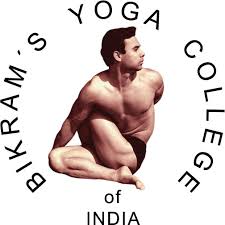As a yoga instructor and orthopedic technician with 45 years of combined experience, I've witnessed firsthand the transformative power of yoga. It's a practice that weaves together physical postures (asanas), breathwork (pranayama), and mindfulness to cultivate strength, flexibility, and inner peace. But one question that frequently arises among students is the role of hydration during a yoga session.
While staying hydrated is undeniably crucial for overall health and well-being, the topic of drinking water during yoga practice presents a nuanced perspective. In this article, I'll delve into the intricate relationship between hydration, focus, and the unique demands yoga places on the body.
The Science of Sweat: Why Hydration Matters
Our bodies are roughly 60% water, making it the most abundant component. Water plays a critical role in numerous physiological processes, including:
- Lubricating joints for smooth movement
- Regulating body temperature through sweating
- Delivering nutrients to cells and removing waste products
- Maintaining proper blood pressure and circulation
During physical activity, our bodies generate heat. To maintain a safe internal temperature, we sweat. Sweat is primarily composed of water, along with electrolytes like sodium, potassium, and chloride. These electrolytes are essential for muscle function and nerve transmission.
Dehydration occurs when the body loses more fluids than it takes in. When this happens, our blood volume decreases, leading to a cascade of effects:
- Reduced blood flow: This can impair the delivery of oxygen and nutrients to muscles and organs, potentially leading to fatigue, dizziness, and cramps.
- Stiffness and reduced flexibility: Dehydration can stiffen muscles and connective tissues, making it more challenging to move with ease and fluidity in yoga poses.
- Increased risk of injury: Dehydration can decrease joint lubrication and make the body more susceptible to strains and sprains.
The Case for Pre- and Post-Hydration
Given the importance of hydration for optimal body function, I strongly encourage proper hydration before and after your yoga practice. Here's how to ensure you're adequately prepared:
- Pre-hydrate: Aim to drink 16-20 ounces of water 1-2 hours before your yoga session. Avoid large gulps right before class, as this can lead to bloating and discomfort during practice.
- Listen to your body: If you feel thirsty during a particularly long or strenuous class, take a small sip of water mindfully. However, prioritize maintaining focus and breathwork whenever possible.
- Rehydrate after class: Replenish lost fluids by drinking water or electrolyte-enhanced beverages after your practice. Aim to consume at least 20 ounces for every hour of yoga performed.
The Art of Focus: Cultivating Inner Stillness
Yoga is more than just physical postures. It's a journey inwards, cultivating focus, mindfulness, and a sense of inner peace. Here's how hydration, breathwork, and focus intertwine on the yoga mat:
- Ujjayi and Pranayama: These controlled breathing techniques are cornerstones of yoga practice. Ujjayi, also known as victorious breath, creates a gentle internal sound by constricting the glottis (the opening between the vocal cords).
- Pranayama encompasses various breathing exercises that regulate the flow of prana (life force energy) within the body. Focused breathwork helps to calm the mind, enhance concentration, and deepen your connection to the present moment.
- Mind-Body Connection: When you're constantly reaching for your water bottle, your attention gets pulled away from the present moment and the sensations within your body. Staying hydrated before and after practice allows you to fully immerse yourself in the flow of your yoga experience.
Finding Your Balance: A Personalized Approach
The ideal approach to hydration during yoga can vary depending on several factors:
- Yoga Style: Vinyasa flows and hot yoga (Bikram) generate more heat and lead to greater sweat loss compared to slower-paced Hatha or Yin yoga practices. You might feel the need for a small sip of water during a vigorous vinyasa session, while it might be unnecessary during a restorative Yin practice.
- Climate: If you practice yoga in a hot and humid environment, you'll naturally sweat more. Adjust your pre-hydration accordingly.
- Individual Needs: Some individuals sweat more profusely than others. Pay attention to your body's signals and adjust your hydration strategy as needed.
Beyond Hydration: Optimizing Your Yoga Practice
Here are some additional tips to enhance your yoga experience:
- Wear breathable clothing: This allows sweat to evaporate more effectively, keeping you cooler and more comfortable. Read more here about Bikram yoga attire.
- Practice in a well-ventilated space: Fresh air circulation helps regulate body temperature and prevent overheating.
- Listen to your body: Don't push yourself beyond your limits, especially in hot yoga classes. Take breaks as much do you need, it is your own journey.
If you chance upon practicing at 2Be Yoga, help yourselves to some Kangen Ionized Water. Kangen water is tested and proven to absorb in the body within 30 seconds, allowing for faster hydration without the bloated feeling!



